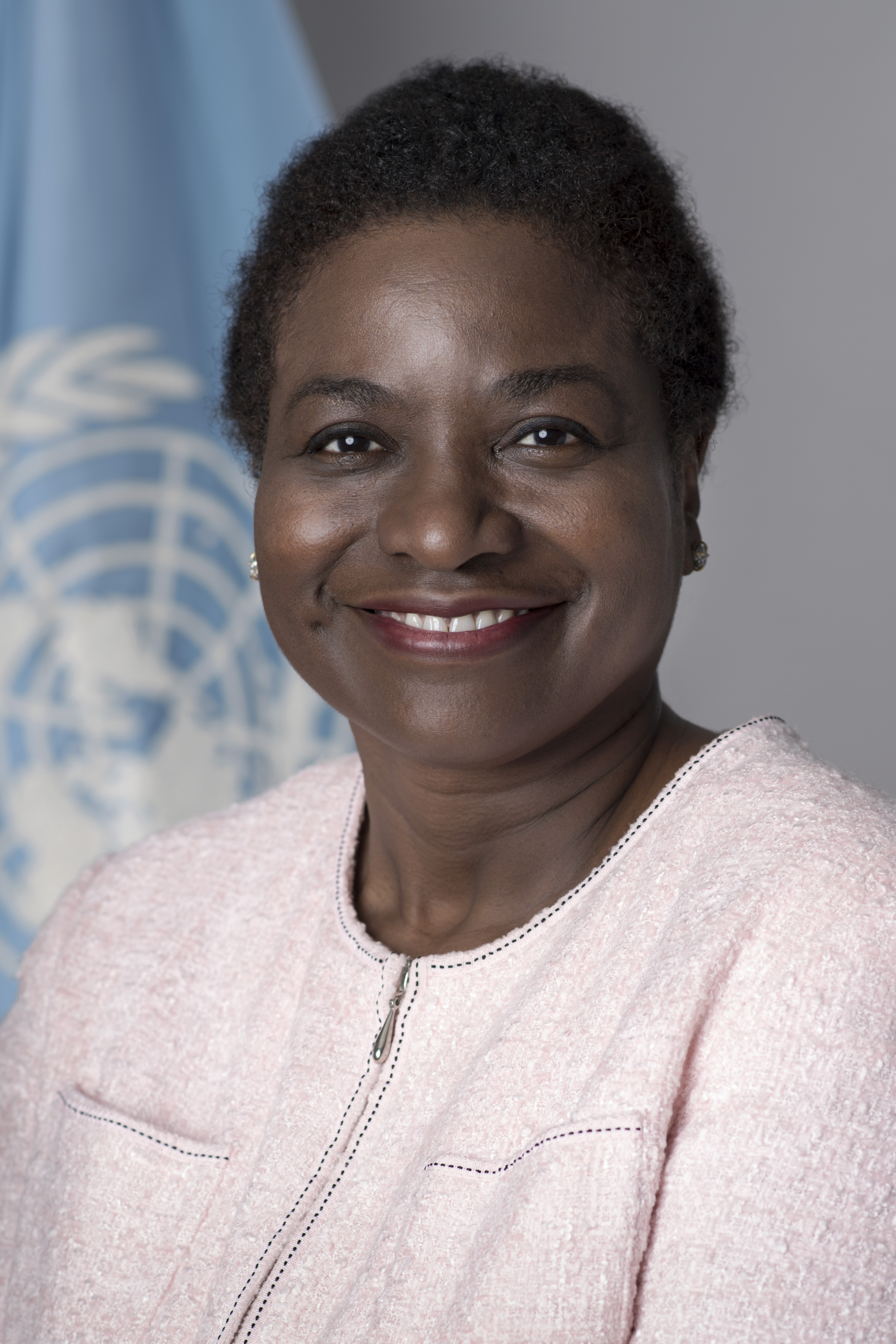Fifty years ago, the United Nations International Conference on Human Rights resolved in the Proclamation of Teheran of 13 May 1968: “Parents have a basic human right to determine freely and responsibly the number and the spacing of their children.” Introducing a resolution on family planning that was reflected in the Proclamation, the delegate who coordinated negotiations on the resolution declared that it, “says 'yes' to planning by the family and 'no' to planning for the family." Family planning was, therefore, a human right for couples to exercise, not “population control” to be imposed by the State. World Population Day 2018 commemorates this landmark agreement.
World Population Day is about countering any notion of “population control”, ensuring that future generations never take a hard-won human right for granted, and about strengthening the global rights and development frameworks that support it.
Despite tremendous progress since 1968, hundreds of millions of women, men and young people are unable to exercise the right to plan their families, and 214 million women still lack modern contraceptives.

UNFPA Executive Director Dr. Natalia Kanem, "Fifty years ago, the world proclaimed family planning a basic human right at the first International Conference on Human Rights. We have seen significant progress since then. For the first time in history, nearly 700 million women and adolescent girls in developing countries now use modern contraceptives – the best means of exercising the right to determine the number and spacing of one’s children.
When a woman can plan her family, she can plan her life. She can pursue more education, seek and keep better jobs, and contribute more to her family, her nation and to global prosperity. As she becomes better off financially, her children receive better education, and the benefits carry over well into future generations."
The Human Right
The rights-based approach to family planning treats individuals as full human beings in their own right, as active agents, not as passive beneficiaries. This approach is built upon the explicit identification of rights-holders (individuals) and the duty-bearers (governments and others) that are responsible for delivering on rights. Today, family planning is widely accepted as a foundation for a range of rights.
Since the Proclamation of Teheran in 1968, numerous treaties, conventions and agreements relevant to reproductive health and rights have reaffirmed these human rights.
These include in:
1969: United Nations General Assembly Declaration on Social Progress and Development, resolution 2542 (XXIV), Article 4: “Parents have the exclusive right to determine freely and responsibly the number and spacing of their children.” The Assembly also resolved that the implementation of this right requires, “the provision to families of the knowledge and means necessary to enable them to exercise their right….”
1979: The Convention on the Elimination of All Forms of Discrimination Against Women (CEDAW), a global human rights treaty that specifically says family planning is key to ensuring the health and well-being of families. Among its provisions was Article 10 (h): “[States Parties shall ensure] access to specific educational information to help to ensure the health and well-being of families, including information and advice on family planning.” Article 12.1: “States Parties shall take all appropriate measures to eliminate discrimination against women in the field of health care in order to ensure, on a basis of equality of men and women, access to health care services, including those related to family planning.” Article 14.2: “States Parties shall take all appropriate measures to eliminate discrimination against women in rural areas [and] ensure to such women the right: … (b) To have access to adequate health care facilities, including information, counselling and services in family planning.” Article 16.1: “States Parties shall…ensure, on a basis of equality of men and women… (e) The same rights to decide freely and responsibly on the number and spacing of their children and to have access to the information, education and means to enable them to exercise these rights.”
1994: At the Cairo International Conference on Population and Development (ICPD), 179 governments agreed that population and development are inextricably linked, and that empowering women and meeting people’s needs for education and health, including reproductive health, are necessary for both individual advancement and balanced development. The conference adopted a Programme of Action that focused on individuals’ needs and rights, rather than on achieving demographic targets. Concrete goals of the ICPD centred on ensuring universal access to reproductive health care, including family planning. Principle 8 states: “All couples and individuals have the basic right to decide freely and responsibly the number and spacing of their children and to have the information, education and means to do so.”
1995: Beijing Declaration and Platform for Action of the United Nations Fourth World Conference on Women, which reiterated the right to family planning laid out in the ICPD Action Programme. The Platform’s paragraph 223 reaffirms: “reproductive rights rest on the recognition of the basic right of all couples and individuals to decide freely and responsibly the number, spacing and timing of their children and to have the information and means to do so.”
2015: At the Sustainable Development Summit, world leaders agreed, under Development Goal 3, to ensure by 2030 “universal access to sexual and reproductive health-care services, including for family planning, information and education.”
When People Enjoy Their Right to Family Planning
Access to voluntary family planning enables women to space their births, benefiting both mothers’ and children’s health. Family planning also reduces the risk of death and disability from pregnancy and childbirth too early or too late in a woman’s reproductive life. Family planning is essential to overcoming poverty, which deepens when individuals can’t choose the size of their family. Pregnancy- and childbirth-related complications are the number-one killers of girls aged 15 to 19 in developing countries. Access to information and contraceptives can therefore protect young people’s lives. The more information they have, the better choices they can make to be able to fulfil their futures.
Women who have fewer risky births, healthier pregnancies and safer deliveries face lower risks of death and improved overall health. Their babies are born healthier and their children’s health is better early in life. These improvements in health produce an array of economic benefits: greater investments in schooling, greater productivity, greater labour force participation and, eventually, increased income, savings, investment and asset accumulation.
Contraception helps prevent adolescent pregnancy and thus helps keep girls in school, building their life skills and opens up opportunities later in life to join the paid labour force.
The highest rates of sexually transmitted infections worldwide are among young people aged 15 to 24. Family planning services, especially the provision of male and female condoms male, enhance the prevention of these infections. Condoms offer dual protection from HIV infection and unintended pregnancy. Family planning services can also help HIV-positive women to avoid pregnancy if and when they wish to do so.
The right to family planning, therefore, permits the enjoyment of other rights, including the rights to health, education, and the achievement of a life with dignity. An informed rights-based approach to family planning is the most cost-effective intervention for tackling maternal death and illnesses. Ensuring universal access to reproductive health services, including family planning, can ultimately speed up a country’s progress towards reducing poverty and achieving global development goals.
UNFPA and Family Planning
UNFPA advances the right of all couples and individuals to decide freely and responsibly the number and spacing of their children and to have the information, education and means to do so.
Improving access to voluntary family planning is central to the UNFPA mandate. UNFPA works with countries to increase the contraceptive prevalence and to prevent, control and treat sexually transmitted infections.
UNFPA advocates increased national investment in family planning services, promotes reproductive health commodity security and supports efforts to expand the choice of methods and improve the quality of services. A priority is an access to information and services for adolescents and other marginalized populations.
The new UNFPA Strategic Plan aims to eliminate all unmet needs for family planning by 2030. This is one of the Fund’s three transformative results at the very heart of the Plan.
In 2017, contraceptives provided by UNFPA had the potential to reach 27 million users with a choice of modern family planning methods.
These contraceptives had the potential to avert:
- 13.5 million unintended pregnancies
- 32,000 maternal deaths
- 207,000 child deaths
- 4.1 million unsafe abortions
Contraceptives provided by UNFPA in 2017 had the potential to save families and health systems $819 million in direct health-care costs (costs of care during pregnancy and childbirth).
Population dashboard
The World Population Dashboard showcases data on family planning and other aspects of sexual and reproductive health.
United Nations Population Fund (UNFPA)
The United Nations Population Fund (UNFPA) was established in 1969 and as the biggest aid source with international funding in the area of population operating around the world. UNFPA operates in more than 150 countries for creating policies and strategies that support sustainable development. Having started its activities on a project basis, the United Nations Population Fund (UNFPA) has been working on reproductive health, encouraging social gender equality, collecting, using and distributing data about development and humanitarian aid in Turkey since 1971. Within this framework, the first Country Program lasted from 1988 to 1992 and now the Sixth Country Program (2016-2020) is being executed.
The United Nations Population Fund (UNFPA) works to deliver a world where every pregnancy is wanted, every childbirth is safe and every young person's potential is fulfilled. To this end, UNFPA focuses especially 5 of the Sustainable Development Goals (SDGs);
Follow United Nations Population Fund (UNFPA) on social media:
Facebook: UNFPA.Turkey Twitter: UNFPATurkey Instagram: unfpa_turkey YouTube: UNFPATurkey


